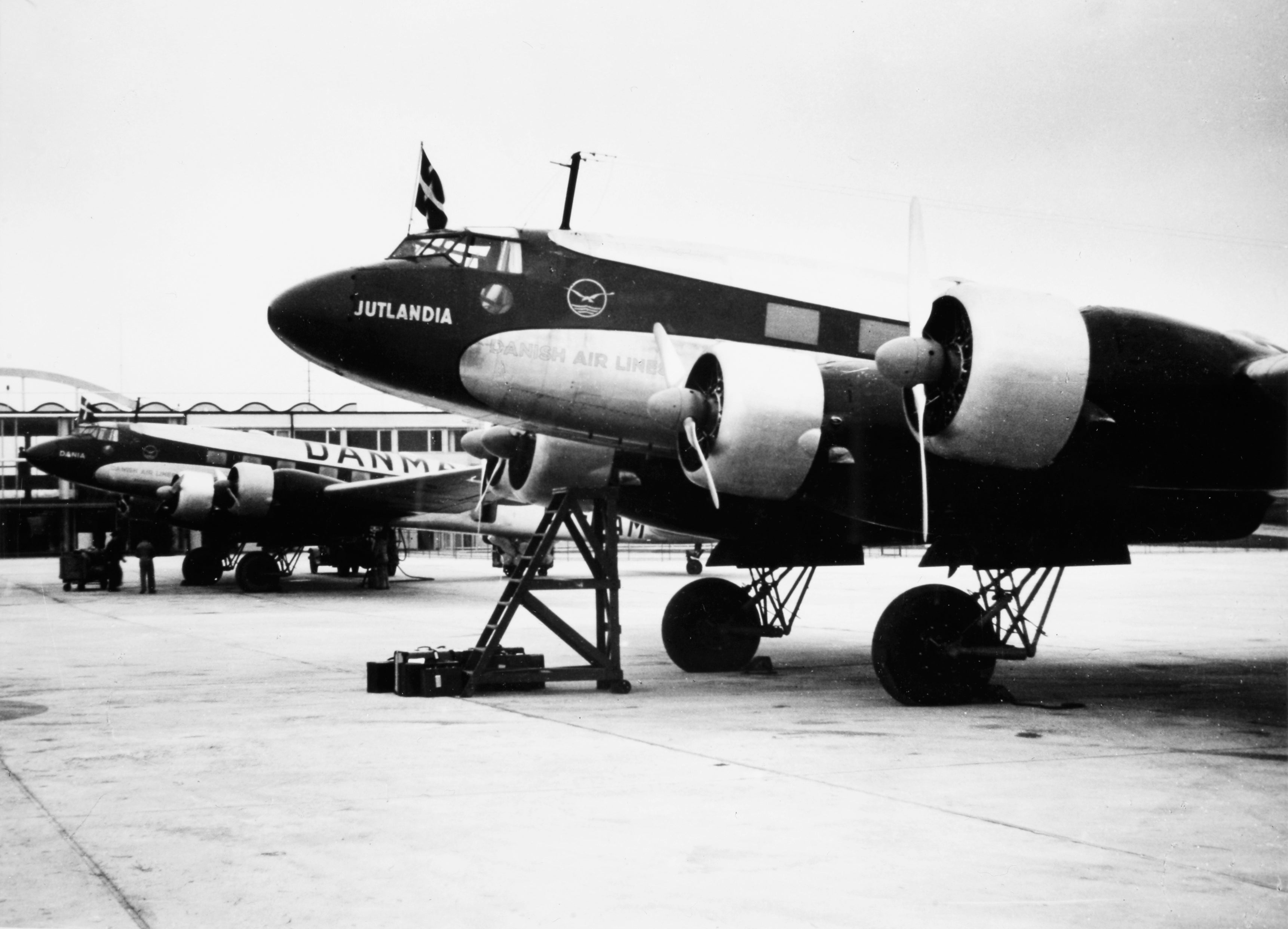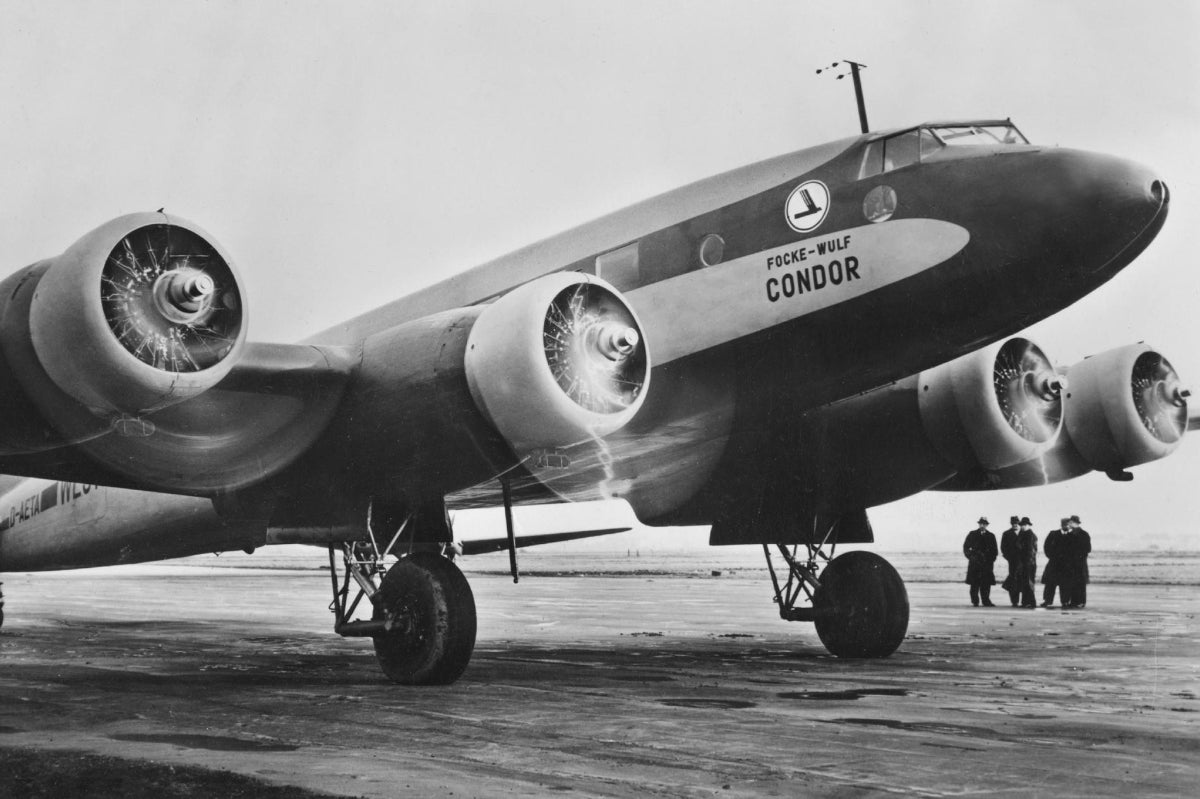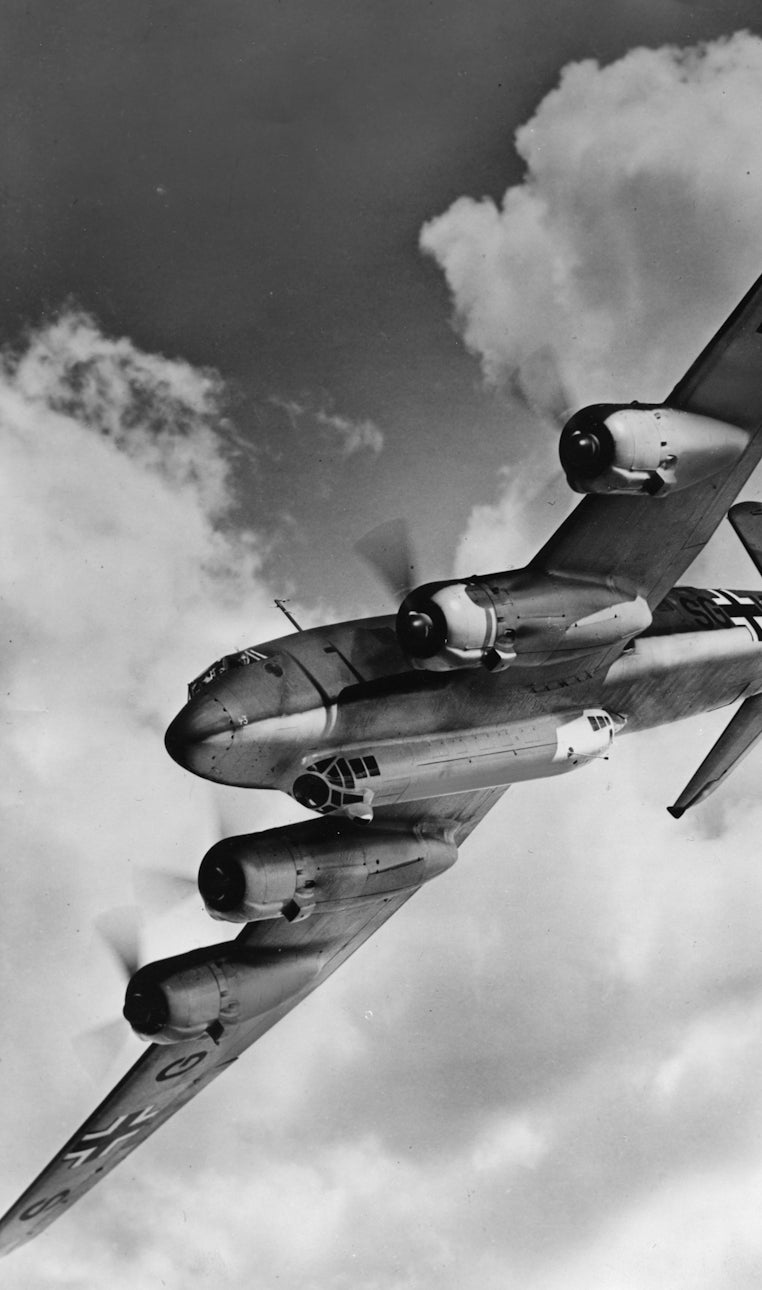

Focke Wulf Fw200 (Condor)
The Focke-Wulf Fw 200 "Condor" was a German long-range aircraft originally developed as a commercial airliner in the late 1930s. Designed by Kurt Tank, it first flew in 1937 and was notable for being the first airliner to fly nonstop from Berlin to New York (in August 1938). This flight was a world record at the time, completing the 6,400km journey in just over 24 hours.
With the outbreak of World War II, the Fw 200 was adapted for military use, serving primarily as a maritime patrol, reconnaissance, and long-range bomber for the Luftwaffe. Its long range and payload capacity made it ideal for anti-shipping operations, particularly in the Atlantic, where it became known as the "Scourge of the Atlantic" for its role in spotting and attacking Allied convoys in coordination with German U-boats.
The military versions were equipped with bomb racks, defensive machine guns, and sometimes radar. However, the aircraft's civilian origins meant it had a relatively weak airframe, making it vulnerable to enemy fighters and limiting its effectiveness in heavily contested airspace.
Despite these limitations, the Fw 200 played an important role in Germany's early maritime air strategy, and its combination of range, versatility, and adaptability made it a unique and valuable asset during the war. As with many of Focke Wulf's creations, the Fw200 was a pioneer in many ways and paved the way for bigger and better aircraft in the future.
Civilian use
The Focke-Wulf Fw 200 "Condor" was originally developed as a civilian airliner before World War II and played a significant role in advancing long-distance air travel in the 1930s.
Long range passenger transport
The Fw200 was used by several European airliners. Most notably Lufthansa, Germany's national airline and Danish Airlines. Both used it as a long-range commercial aircraft.
It had a seating capacity for 26 passengers with a range of over 3,000 km (1,900 miles), making it one of the first aircraft capable of transcontinental flights without re-fueling.
International Airline Service
Apart from Lufthansa, the Fw200 was used by other airlines including Scandinavian Airlines (DNL), and it was also evaluated by Japan Air Transport and Soviet Aeroflot.
It was used on routes to South America, particularly Brazil, reflecting Germany’s interest in expanding civil aviation links with Latin America.
VIP and Government Transport
Before and during the early stages of the war, several Fw 200s were converted into VIP transports for high-ranking German officials, with luxury interiors and extended range

Military use
The Focke-Wulf Fw 200 "Condor" saw extensive military use during World War II, primarily by the German Luftwaffe, after being converted from its original civilian airliner design.
Maritime Patrol and Reconnaissance
The Fw 200 was heavily used for long-range reconnaissance over the Atlantic Ocean. Hunting with the Wulf packs, it located Allied convoys and relayed their positions to German U-boats, playing a crucial role in the Battle of the Atlantic. It was virtually unchallenged early on, but with the introduction of ship based fighters and improved AA defences the Fw200 was easily dealt with over time.
Anti-Shipping Operations
Armed with bombs and machine guns, the Condor attacked Allied merchant ships and supply vessels. It was responsible for the sinking and damaging of numerous ships, earning the nickname: "Scourge of the Atlantic."
Transport and Logistics
Later in the war, the Fw 200 was used for troop transport, cargo delivery, and VIP transport, particularly on long-range routes such as between Germany and occupied Norway or the Eastern Front.
Limitations
The aircraft retained the structural weaknesses of its civilian design, making it vulnerable to enemy fighters and prone to damage under heavy loads.
As Allied air defences improved, the Fw 200 suffered increasingly high losses and was eventually withdrawn from front-line maritime patrol roles.

